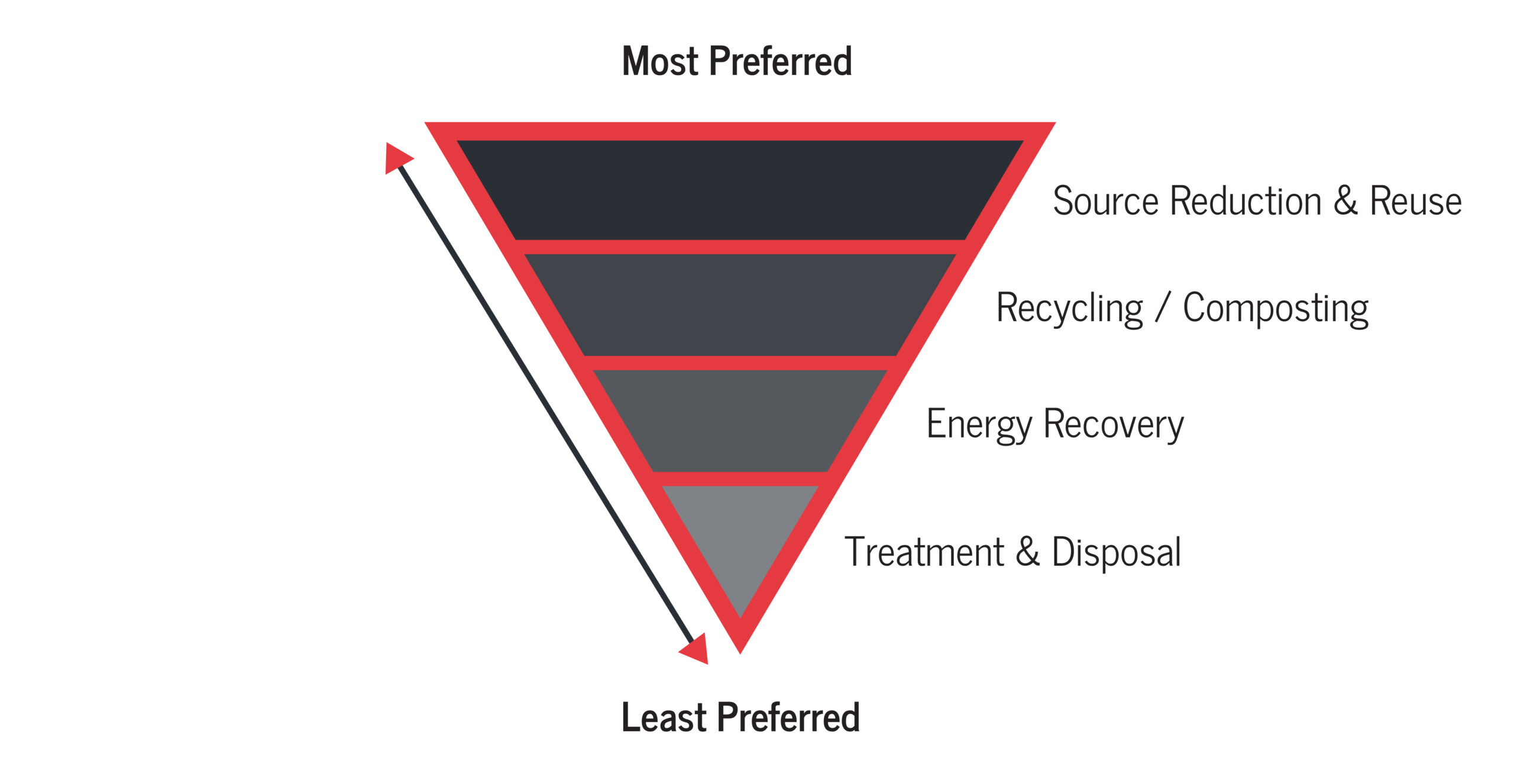Many people believe that when they take small steps toward sustainability, whether they recycle or dabble in shopping second-hand, that their sustainability journey is done there. But that shouldn’t be the case. According to the EPA, one person, on average, creates 4.9 lbs of waste a day (EPA.gov).
The EPA also states that in 2018, Americans created 292.4 million tons of solid waste. Out of all the solid waste, around 69 million tons were recycled, 25 million tons were composted, totaling almost 94 million tons of solid waste either recycled or composted. This resulted in only a 32.1% recycling and composting rate. It is estimated that around 17.7 million tons of food were managed by other methods, resulting in 146 million tons of solid waste landfilled (https://www.epa.gov/facts-and-figures-about-materials-waste-and-recycling/national-overview-facts-and-figures-materials#NationalPicture). If a handful of households made conscious decisions to decrease their solid waste millions of tons of solid waste would not end up in landfills.
Making small conscious decisions about your waste output is a step in the right direction, but there is always more to be done. However, the blame should not be on the average individual. Big corporations make up a substantial amount of the waste on our planet, and they should be held accountable. Although there are regulations and laws being passed, there are also actions the average individual can take to do their part.
There are many things that can be done to eliminate millions of tons of waste. Recycling is only the tip of the iceberg when it comes to being more sustainable.
In the Waste Management Hierarchy, the most preferred section begins with source reductions and reuse, then recycling/composting, then goes toward the least preferred section with energy recovery, and treatment & disposal.

Source reduction & reuse is a preventative method which limits what you bring into the waste stream. This includes shopping second-hand to reduce the intake of new items that will ultimately end up in a landfill. This could be anything from buying used appliances from Goodwill to taking old t-shirts and making a quilt out of it.
Recycling or Composting is next on the Waste Management Hierarchy. A lot of people recognize the act of recycling as a main goal in becoming a more sustainable person, but really that should be the bare minimum. Everyone should recycle (and recycle properly) and go up from there. Please refer to our resources (https://www.pinardwaste.com/residential-2/recycling/) to recycle properly with us or refer to waste360 (https://www.waste360.com/recycling).
Composting, on the other hand, is another practice that needs to be done properly for it to be effective. Resources to learn how to compost are also on waste360 (https://www.waste360.com/organics/composting). Mixing food in your trash is harmful for landfills and the environment. Roughly ⅓ of all the food we have never gets eaten and ends up thrown away (https://innovate-eco.com/what-happens-to-food-waste-in-landfills-the-full-environmental-impact). All that food then gets buried in landfills and the organic material is broken down without oxygen which is called anaerobic digestion. This creates greenhouse gases that are released into the atmosphere which adds to global warming. When composted in a proper circumstance, the food is broken down with oxygen in a process called aerobic digestion, which helps to avoid creating a by-product of greenhouse gases. When done properly, compost gets processed into natural fertilizer that can enrich the soil and environment.
Energy recovery is the conversion of non-recyclable waste into usable heat, electricity, or fuel, through the processes of combustion, gasification, pyrolization, and landfill gas recovery. This takes the greenhouse gases (mentioned above) and turns it into something useful instead of releasing them into the atmosphere. This process is out of an average individual’s hands, and puts the responsibility in the hands of corporations and landfill companies. If waste is reduced by a significant amount with the first two management techniques above, then energy recovery would be one of the last steps to make sure what waste does end up in a landfill is turned into something useful.
Lastly, Treatment & Disposal is the least preferred method of waste management. This refers to the end-of-life stage at landfills. Because the landfills are the last stop for any materials that are thrown out, they need to be treated as such. When organic materials are separated out of trash in the household, landfills run more smoothly. After the recovery of energy, landfills are then covered up and turned into parks and golf courses.
Being more sustainable with your waste starts at the top. You can stop your waste intake at the source by simply not buying new items that will ultimately end up in a landfill. Going down the Waste Management Hierarchy, you can recycle or compost all the waste that is eligible for either. If you need to throw things away, the landfills in which your waste ends up should be recovering all the energy it can to turn it into electricity or fuel we would normally be getting from someone else. And lastly, if you’ve done all you can, let’s make sure the treatment of a landfill is done properly and turned into something productive.

